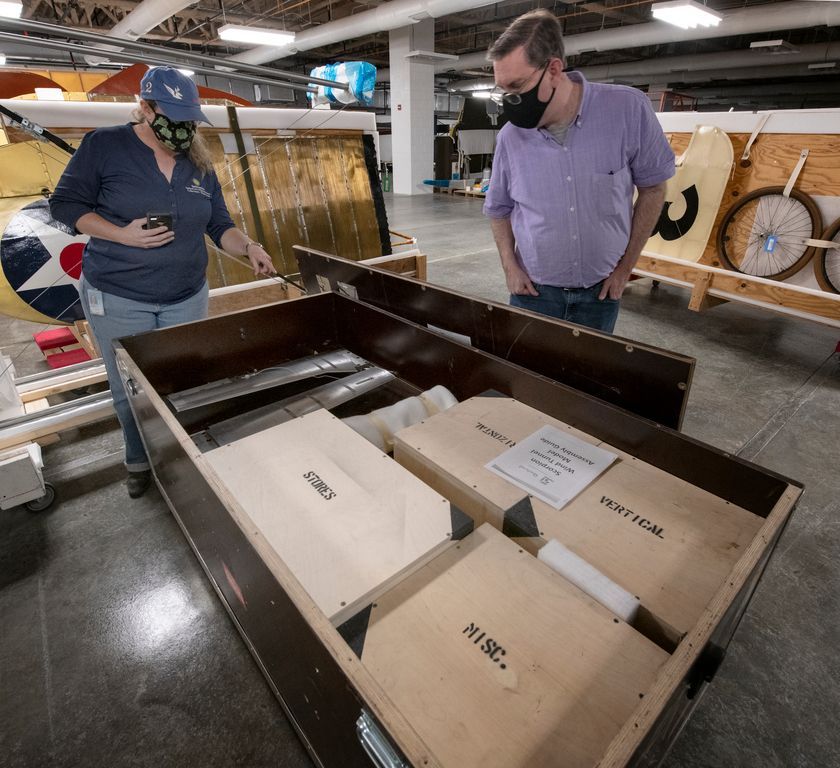
Every day is an opportunity to learn something new for Roger Connor, an aeronautics curator at the Smithsonian’s National Air and Space Museum.
“I most enjoy working with brilliant and enthusiastic staff, volunteers, while also getting to engage with some amazing history makers,” said Connor, a double George Mason University alumnus. “My most memorable moment was in digging through a family’s collection of papers in a barn attic and finding the worksheets used to teach Charles Lindbergh celestial navigation.”
Connor, an experienced commercial pilot, specializes in vertical flight. He curates the museum’s vertical flight collection, which includes helicopters, gyroplanes, and vertical takeoff and landing aircraft, along with a host of other systems.
“I oversee a collection of more than 7,000 different artifacts,” said Connor, who started working at the museum in September 2000, “most notably vertical flight aircraft—rotorcraft and vertical take-off and landing (VTOL)—and drones.”
Connor curated the aviation and modern military components of the exhibit, “Time and Navigation: The Untold Story of Getting from Here to There,” and is currently helping develop several new exhibits.
“One of the most exciting exhibits I’m working on is a temporary exhibit about Urban Air Mobility—autonomous flying taxis,” said Connor. “This is a field that is developing rapidly, but still has many lingering questions about its feasibility. The current enthusiasm for the concept touches on many of the ideas about vertical flight that I explored in depth for my dissertation.”

Connor received his MA in History from Mason in 2009 and completed his PhD in History in 2020. Zachary Schrag, a professor in the History and Art History Department, served as Connor’s academic advisor.
“My graduate training at Mason is at the core of my work, whether as a scholar or as interpreter of historical research for the general public,” said Connor. “Zach taught me that writing an engaging narrative is essential to making history accessible to a broad audience.”
His doctoral dissertation, “Rooftops to Rice Paddies: Aerial Utopianism, Helicopters, and the Creation of the National Security State,” addressed the U.S. government’s technological stewardship in the development of rotary wing flight and its social implications.
Connor, who began his career as an intern in the summer of 2000 while he was working on an MA in museum studies at George Washington University, said that half of the aeronautics curators working for the Smithsonian have master’s degrees from Mason, and they frequently have Mason students as interns.
“I have had half-dozen or so interns from Mason, including a couple who have been hired at the museum,” said Connor.
Connor said the biggest COVID-19 challenge has been the closure of archival collections. The museum’s Steven F. Udvar-Hazy Center in Virginia is reopened, and the Air and Space Museum on the National Mall is scheduled to reopen to the public on July 30.
He said the National Air and Space Museum is overhauling its 23 exhibition galleries downtown, and the first of them will open later this year. He is heavily involved in the development of the three military-oriented galleries: World War I, World War II, and Modern Military Aviation.
“One of my most interesting acquisitions for the museum was a Coast Guard HH-52A helicopter, used from the 1960s to the ’80s,” said Connor. “It was important to acquire because the life-saving aspect of helicopters frame one its most significant applications for society. It was a decade-long project and a fitting tribute to those who put their lives on the line to save others.”
